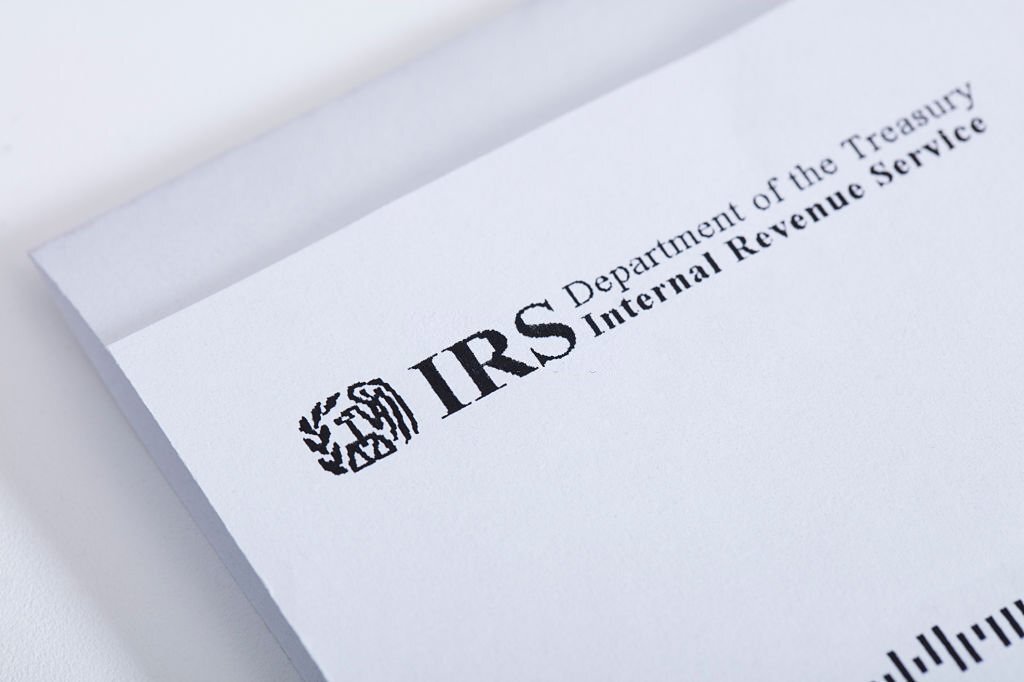Taxes
IRS: Collection Notices Are Coming Back in 2024
The IRS has hit the restart button on sending out automated collection notices, ending a two-year hiatus because of the COVID-19 pandemic.
Dec. 19, 2023

The IRS has hit the restart button on sending out automated collection notices, ending a two-year hiatus because of the COVID-19 pandemic, the agency said on Tuesday.
Because automated collection notices were paused during that two-year span, the IRS also said today it will be providing about $1 billion in penalty relief to approximately 4.7 million individuals, businesses, and tax-exempt organizations that weren’t sent collection reminders about their overdue taxes during the pandemic. Those who make under $400,000 a year will be the biggest beneficiaries of the penalty relief, according to the IRS.

“As the IRS has been preparing to return to normal collection mailings, we have been concerned about taxpayers who haven’t heard from us in a while suddenly getting a larger tax bill. The IRS should be looking out for taxpayers, and this penalty relief is a common-sense approach to help people in this situation,” IRS Commissioner Danny Werfel said in a statement on Dec. 19.
In February 2022, the IRS temporarily suspended the mailing of automated reminders to taxpayers to resolve their tax debts because the agency was dealing with a sizeable backlog of unprocessed returns and correspondence. These reminders would have normally been issued as a follow-up after the initial notice.
While the collection notices stopped, failure-to-pay penalties didn’t—and continued to accrue for taxpayers who had overdue taxes after receiving the initial balance due notice.
Because of this unusual situation, the IRS has put a plan in place—before resuming normal collection notices for tax years 2020 and 2021 in January—to help taxpayers with unpaid tax bills, including some people who haven’t received a notice from the IRS in more than a year.
The agency said it will be issuing a special reminder letter starting next month, which will alert the taxpayer of their tax liability, easy ways to pay, and the amount of penalty relief, if applied. The IRS urges taxpayers who are unable to pay their full balance due to visit IRS.gov/payments to make arrangements to resolve their tax debts.
The IRS is also waiving the failure-to-pay penalties for eligible taxpayers affected by this situation for tax years 2020 and 2021. The IRS estimates 5 million tax returns—filed by 4.7 million individuals, businesses, trusts, estates, and tax-exempt organizations—are eligible for the penalty relief. This represents $1 billion in savings to taxpayers, or about $206 per return.
As a first step, the IRS has adjusted eligible individual accounts and will make adjustments to business accounts later this month or in early January, followed by trusts, estates, and tax-exempt organizations in late February to early March 2024. Nearly 70% of the individual taxpayers receiving penalty relief have income under $100,000 per year, the IRS said.
The IRS on Tuesday released Notice 2024-7, which explains how the agency is providing failure-to-pay penalty relief to eligible taxpayers affected by the coronavirus pandemic to help them meet their federal tax obligations.
This penalty relief is automatic, the IRS noted, and eligible taxpayers don’t need to take any action to receive it. Eligible taxpayers who already paid their full balance will also benefit, the agency said. Those who took care of their failure-to-pay penalties for tax years 2020 and 2021 will receive a refund or the IRS will credit the payment toward another outstanding tax liability.
Who is eligible for the penalty relief?
The penalty relief only applies to eligible taxpayers with assessed tax under $100,000, the IRS said. Eligible taxpayers include individuals, businesses, trusts, estates, and tax-exempt organizations that filed certain Forms 1040, 1120, 1041, and 990-T income tax returns for tax years 2020 or 2021, with an assessed tax of less than $100,000, and were in the IRS collection notice process—or were issued an initial balance due notice between Feb. 5, 2022, and Dec. 7, 2023. The IRS said the $100,000 limit applies separately to each return and each entity. The failure-to-pay penalty will resume on April 1, 2024, for taxpayers eligible for relief.
Taxpayers who aren’t eligible for this automatic penalty relief also have options, according to the IRS. They may use existing penalty-relief procedures, such as applying for relief under the reasonable cause criteria or the First-Time Abate program. Visit IRS.gov/penaltyrelief for details.
If the automatic relief results in a refund or credit, individual and business taxpayers will be able to see it by viewing their tax transcript. The IRS will send the first round of refunds beginning this month through January 2024. If a taxpayer doesn’t receive a refund, a special reminder notice may be sent with their updated balance beginning in early 2024. Taxpayers with questions on penalty relief can contact the IRS after March 31, 2024.
Automated collection notices resume next month
Automated collection notices and letters will begin going out in January 2024 to individuals with tax debts prior to tax year 2022, and businesses, tax-exempt organizations, trusts, and estates with tax debts prior to 2023, with exceptions for those with existing debt in multiple years, according to the IRS.
“These notices and letters were previously paused due to the pandemic and high inventories at the IRS but will gradually resume during the next several months,” the IRS said.
Current tax year 2022 individual and third-quarter 2023 business taxpayers began receiving automated collection notices this fall as the IRS took steps to return to business as usual.
The pause in collection mailings affected only follow-up reminder mailings. The IRS didn’t halt the mailing of the first, or initial, balance due notices for taxpayers, such as the CP14 and CP161 notices.
The pause meant that some taxpayers who have long-overdue tax debt hadn’t received a formal letter or notice from the IRS in more than a year while some of this older collection work was paused. The IRS will be issuing a special reminder letter to these taxpayers starting next month. Tax professionals and taxpayers will see these reminder letters in the form of letter LT38, Reminder, Notice Resumption.
“This letter will remind taxpayers about their tax liability, giving them an opportunity to address the tax issue before the next round of letters are issued,” the IRS said. “After receiving the reminder mailing, these taxpayers with long-standing unresolved tax issues will receive the next notice, informing them of a more serious step in the tax collection process.”
The IRS urges taxpayers to carefully read any letter or notice they receive before calling the agency. There are also important resources available to get help for tax debt on IRS.gov.
The IRS will issue these balance due notices and letters in gradual stages next year to ensure taxpayers who have questions or need help are able to reach an IRS representative. This will also provide additional time for tax professionals assisting taxpayers, the IRS said.
Reminder about penalties and interest
Taxpayers who owe tax and don’t file their return(s) on time may be charged a failure-to-file penalty. This penalty is usually 5% of the tax owed for each month or part of a month that the tax return is late, up to 25%.
The failure-to-pay penalty applies if a taxpayer doesn’t pay the taxes they report on their tax return by the due date or if the taxpayer doesn’t pay the amount required to be shown on their return within 21 calendar days of receiving a notice demanding payment (or 10 business days if the amount is greater than $100,000).
The IRS is required by law to charge interest when a tax balance is not paid on time. Interest can’t be reduced due to reasonable cause; interest is based on the amount of tax owed for each day it’s not paid in full. The interest is compounded daily, so it’s assessed on the previous day’s balance plus the interest. Interest rates are determined every three months and can vary based on type of tax; for example, individual or business tax liabilities.
More information is available on the interest page of IRS.gov.
